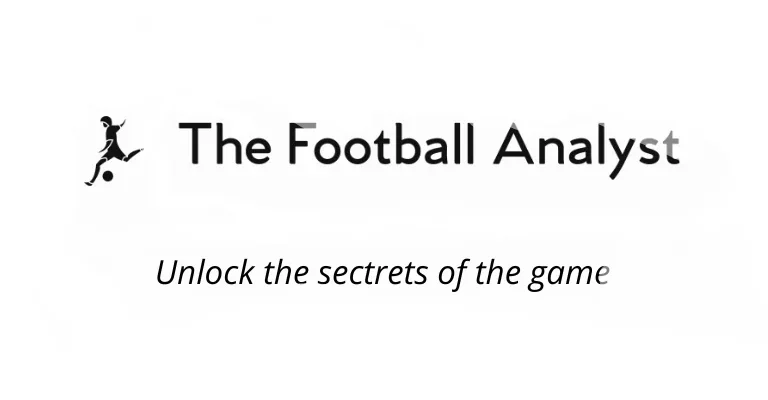In modern football, tactics have evolved to offer teams numerous ways to break down defenses and create scoring opportunities. Among the most effective and widely used tactics are overlaps and underlaps. While both involve dynamic runs by players to stretch the opponent’s backline, they each bring unique advantages to the game.
In this article, we’ll explore the differences between overlaps and underlaps, breaking down how they work, when to use them, and the impact they can have on a match. Whether you’re a coach, player, or fan looking to deepen your understanding of the game, this tactical breakdown will give you insights into how these movements help teams succeed on the pitch.
What Is an Overlap?
An overlap occurs when a player, typically a fullback or wing-back, moves on the outside of a teammate who has the ball. This movement creates a 2v1 situation against the defending fullback, forcing them to decide whether to follow the runner or stay with the ball carrier.
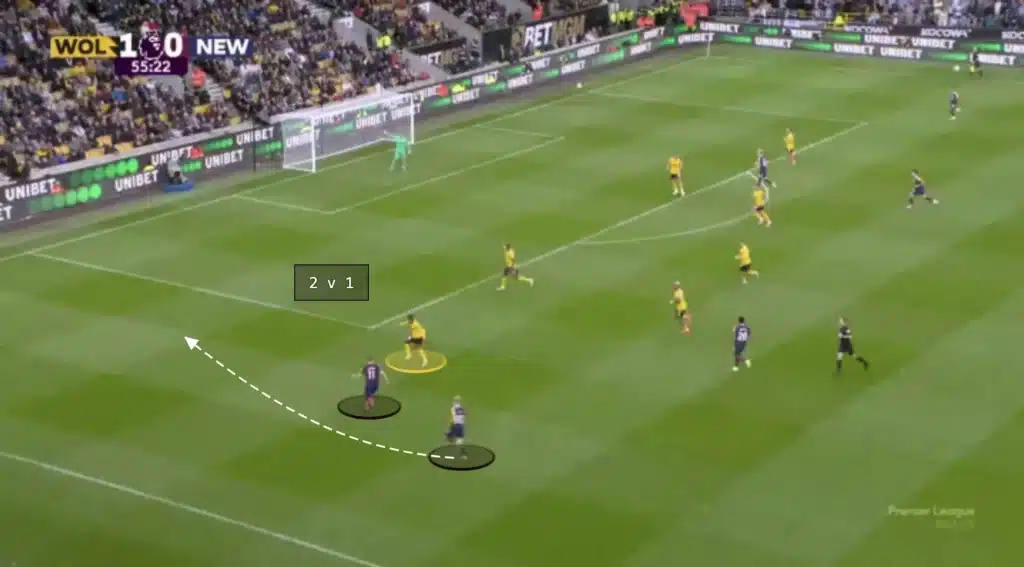
How It Works:
Imagine a left-winger dribbling down the wing, facing the opposition’s right-back. The overlapping fullback runs outside of the winger, sprinting along the touchline. This movement gives the winger two choices:
- Pass to the overlapping fullback who is free on the outside
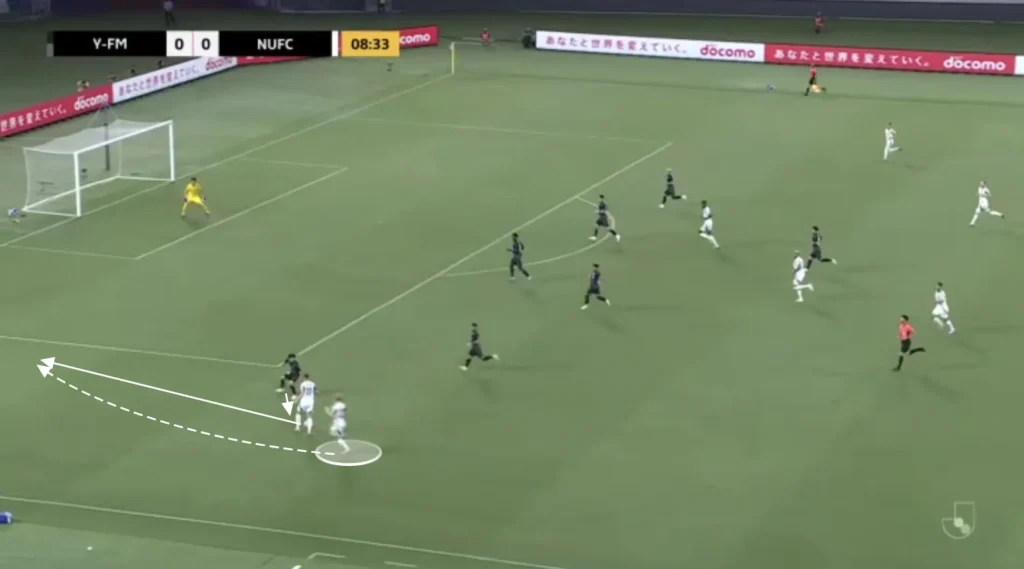
- Cut inside, taking advantage of the space created as the fullback follows the overlapping runner
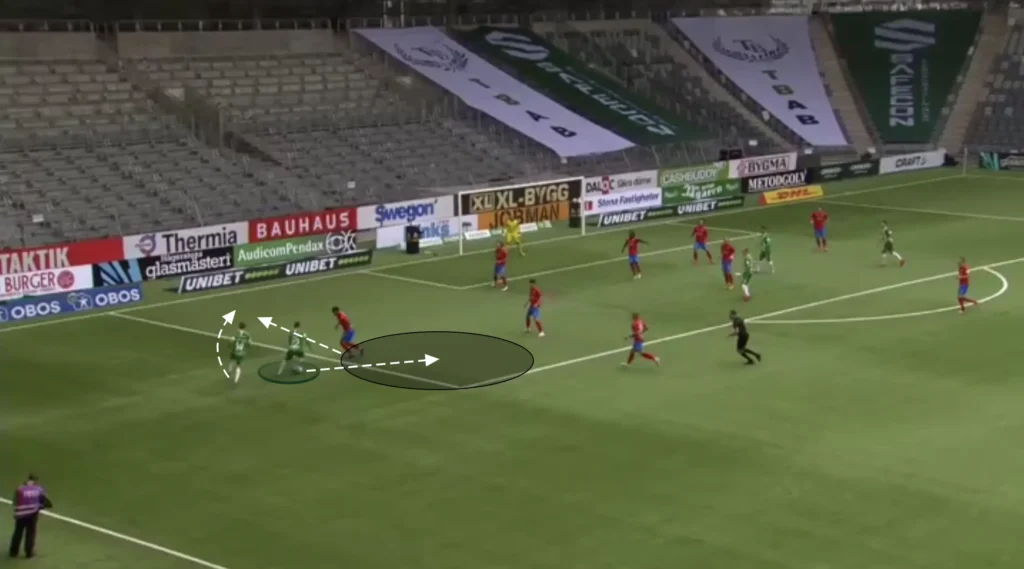
When to Use It:
Overlaps are highly effective when:
- You use a formation with two wide players, for example, 1-4-3-3 or 1-4-4-2
- The opposition is playing in a narrow defensive shape, leaving space on the wings.
- The team wants to deliver crosses into the box.
- The ball carrier is looking to create a crossing or shooting opportunity but needs support to distract or drag defenders out of position.
Key Advantages of Overlaps:
- Creating Space: An overlapping run pulls the defending fullback wider, which can open up space for the winger to cut inside.
- 2v1 Situations: An overlap often creates numerical advantages on the flanks, making it easier to break down defenses.
- Crossing Opportunities: By getting wide and behind the defense, the overlapping player can deliver accurate crosses into the box for attackers.
What Is an Underlap?
An underlap is similar to an overlap but occurs on the inside of the ball carrier. In this case, the supporting player makes a run between the opposition’s fullback and center-back, moving toward the penalty area.
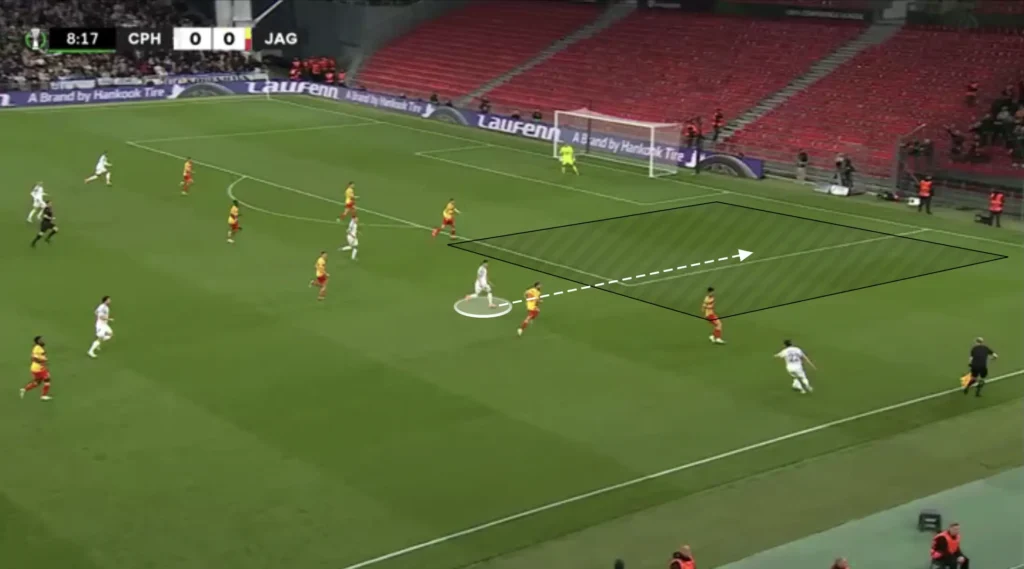
How It Works:
Using a similar scenario, a right-winger dribbles forward on the right side of the pitch. Instead of going outside, a supporting player, usually an attacking midfielder, runs between the opposition’s fullback and center-back. The underlapping run provides options to:
- Pass to the underlapping player who can drive towards the box and cross or take a shot.
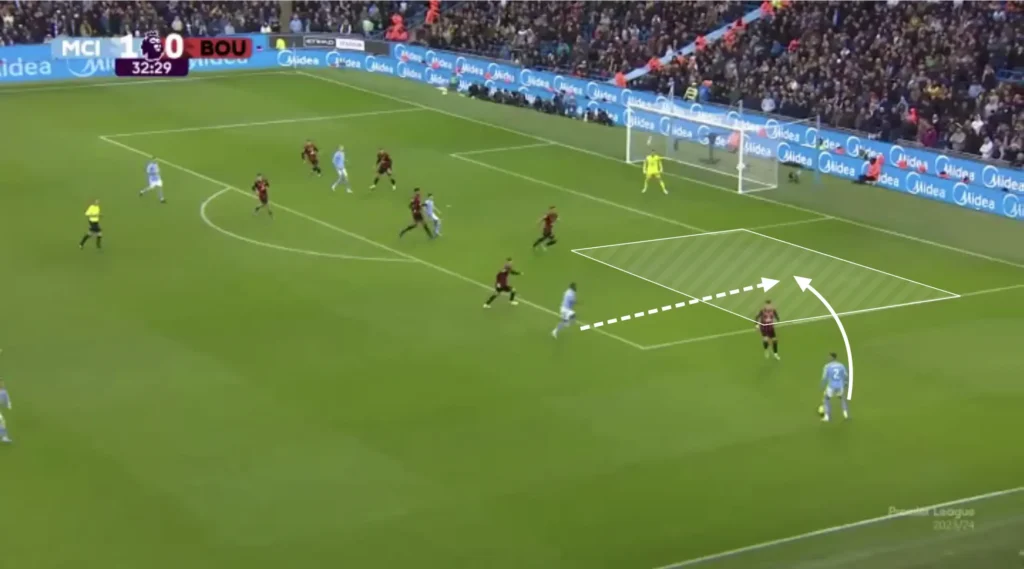
- Force an opposition central midfielder out of position, allowing the winger more space to cut inside and shoot, cross, or find a free player in front of the backline.
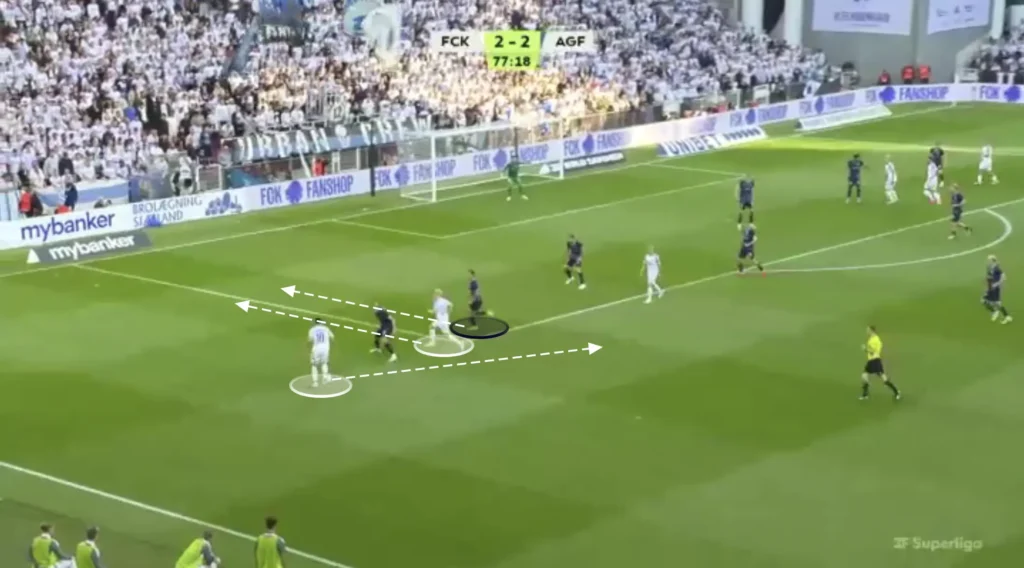
When to Use It:
Underlaps are most effective when:
- You use a formation with only one wide player, for example, 1-3-4-3 or 1-2-3-5
- The defense is spread wide, and there’s space inside for a runner.
- The team wants to play through the middle or reach the penalty area with fewer defenders in the way.
- The supporting player is skilled at driving into the box and crossing or shooting from close range.
Key Advantages of Underlaps:
- Direct Route to Goal: Underlaps create more direct scoring opportunities, as they push players into central, high-danger areas.
- Pulling Defenders Out of Position: When defenders have to track an underlapping runner, it can open up shooting lanes for attackers outside the box.
- Combining with Attackers: The underlapping player can create quick one-twos or other combination plays with attackers in the box.
Overlaps vs. Underlaps: Comparison
Similarities
Underlaps and overlaps are similar in several ways, as both are tactical movements used to create space, overload defenses, and increase attacking options. Here are some key similarities between the two:
- Purpose: Both tactics are designed to stretch the opposition’s defense, creating spaces in the attacking third. This forces defenders to make decisions about who to mark and opens up opportunities for other players.
- Support Runs: Both movements serve as support runs, helping the ball carrier by providing passing options. The ball carrier can then either pass, dribble, or cross depending on the defensive response.
- Creating Overloads: Underlaps and overlaps can create numerical advantages in specific areas, often leading to 2v1 or 3v2 situations. This helps teams break down tightly packed defenses and create more dangerous chances.
- Attacking Variety: Both add variety to the attack. By mixing underlaps and overlaps, teams can keep the opposition guessing and make it harder for defenders to anticipate and block passing lanes or close down attackers.
- Winger Attacking Fullback: Both underlaps and overlaps commonly start with wingers attacking an opposition fullback. Both usually work best with a winger who likes cutting in, as this makes the opposition fullback’s decision more difficult. If the winger is someone who likes taking the ball down the line and crossing it, an overlap or underlap might not be as effective, as the defending fullback never has to push up and can keep dropping to close the space inside.
Key Differences
The key differences between overlaps and underlaps in football tactics lie in positioning, movement, and the spaces they target to break down defenses. Here’s a breakdown of these differences:
1. Positioning
- Overlap: In an overlap, a player (usually a fullback or wingback) moves around the outside of a teammate (usually a winger or midfielder) to receive the ball closer to the touchline. This positioning creates width on the field and forces the opposing defense to cover the outside space.
- Underlap: In an underlap, a player makes a run on the inside of a teammate, often moving into the half-space between the center-back and fullback. This type of movement targets central areas closer to goal and can pull defenders inward, potentially opening up space for teammates in wide areas.
2. Movement
- Overlap: The overlapping player runs around their teammate, often sprinting from a deeper position to receive the ball out wide. This movement is ideal for creating crossing opportunities or pulling defenders out of position along the flank.
- Underlap: The underlapping player runs inside of their teammate, usually toward the box. This movement is often more direct and is intended to penetrate the defense centrally, giving options for quick passes or shots on goal.
3. Space Utilization
- Overlap: Overlaps exploit wide areas, stretching the defense horizontally and creating space for crosses or passing combinations near the touchline.
- Underlap: Underlaps target the half-space, which is between the central and wide channels. This tactic disrupts the defense’s shape by forcing center-backs or defensive midfielders to step out of position, potentially exposing the central areas.
4. Typical Use
- Overlap: Commonly used by teams that prioritize width and crossing, overlaps are seen when teams want to put pressure on a defense by spreading them wide. Overlaps are also useful for teams that like to switch play from one side to the other.
- Underlap: Teams that prefer quick, intricate passing combinations and central attacks often use underlaps. Underlaps are also effective for teams trying to penetrate through the middle and create close-range shooting opportunities or cutbacks into the box.
Both tactics offer unique ways to break down defenses, and effective teams know when to deploy each to maximize their attacking potential. Understanding these differences helps teams choose the right movement based on the defensive setup they face.
Choosing the Right Tactic: Overlap or Underlap?
Deciding whether to use an overlap or underlap depends on several factors, including the team’s style of play, the strengths of the players involved, and the opposition’s defensive setup. Here are a few quick tips:
Use Overlaps if:
- You’re playing against a narrow, compact defense.
- Your fullbacks are strong at crossing.
- You want to stretch the opposition defense wide.
Use Underlaps if:
- You’re facing a team with wide fullbacks that leave space in the middle.
- Your central players are skilled at quick, intricate passes.
- You’re aiming for more direct, central goal-scoring opportunities.
Conclusion
In today’s game, overlaps and underlaps are essential tools that allow teams to break down even the most organized defenses. By understanding the strengths of each tactic and when to use them, teams can maximize their attacking options and create more opportunities to score. The beauty of modern football is its fluidity, and as teams continue to innovate, players and coaches will find new ways to leverage overlaps and underlaps to their advantage.
Whether you’re a player aiming to improve your game or a fan looking to understand the tactical side of football, mastering these concepts adds depth to your knowledge and appreciation of the sport. So, next time you watch a match, keep an eye on those overlapping and underlapping runs—you’ll be watching one of football’s most powerful strategies in action.
